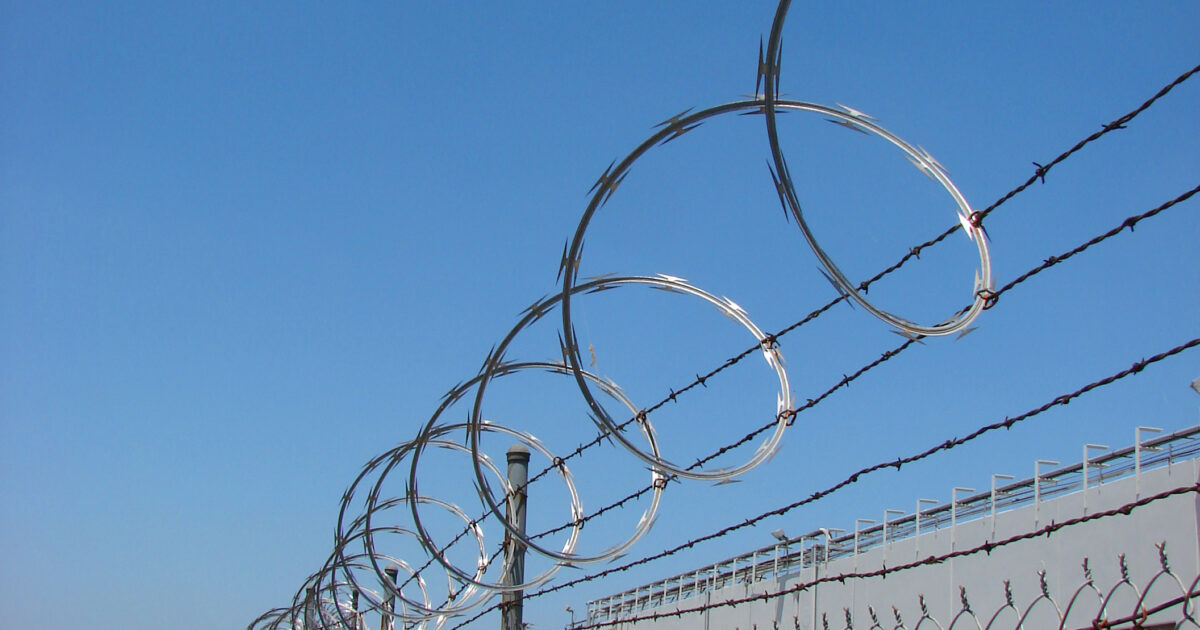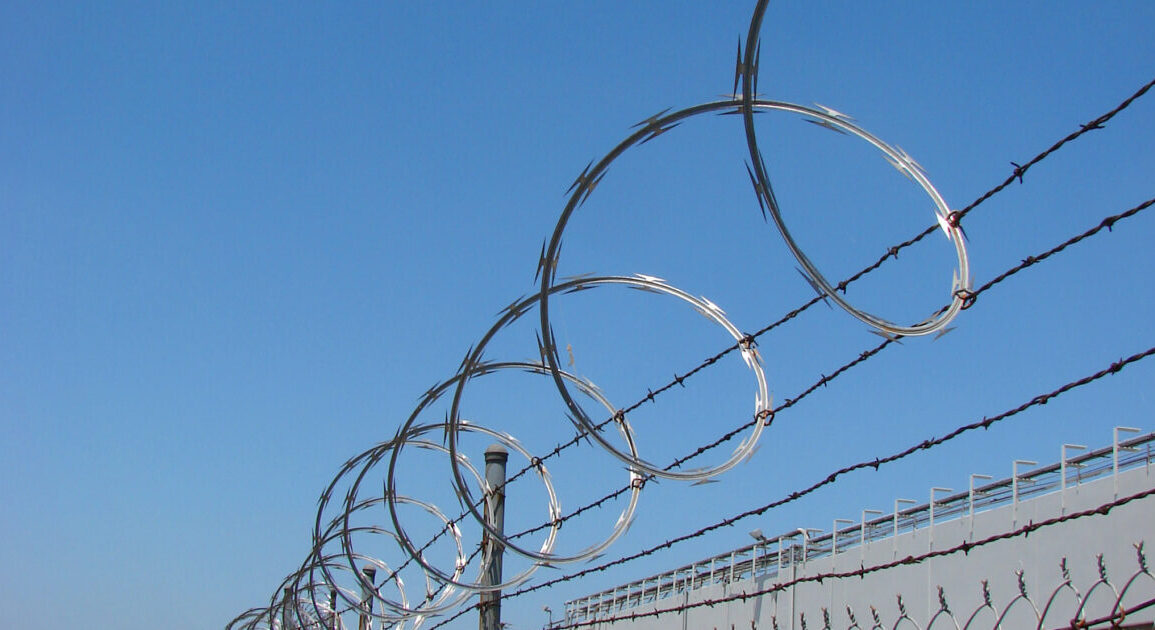
President Trump has announced plans to direct the Departments of Defense and Homeland Security to prepare a 30,000-person migrant detention center at Naval Station Guantánamo Bay. While “Gitmo” has previously been used to house and process asylum seekers intercepted in the Caribbean, this would be the first time in U.S. history that an offshore military base is used to detain—rather than repatriate—migrants with deportation orders. If implemented, the policy could cost American taxpayers billions of dollars.
The detention center at Guantánamo Bay, used to hold detainees from the War on Terror, is widely regarded as the most expensive prison in the world on a per-prisoner basis. Since 2002, around 780 detainees have been held there, but today, only 15 remain.
Determining the facility’s actual cost has been challenging because some expenses remain classified. However, a report from 2019, when the prison housed 40 detainees, revealed that the cost to U.S. taxpayers was more than $540 million annually — roughly $13 million per prisoner. Adjusted for inflation, the figure in 2025 exceeds $663 million ($44 million each per the 15 remaining detainees). By comparison, ADX Florence in Colorado—the only remaining supermax prison in the US prison system and a leader among the world’s most expensive prisons—has an inflation-adjusted estimated annual cost of approximately $103,000 per inmate.
These exorbitant costs stem from a variety of factors. Naval Station Guantánamo Bay functions in complete isolation from the Cuban economy because the regime regards the territory as an illegal military occupation. As a result, the base must desalinate its own water, maintain an independent energy grid, and import everything else from the U.S. mainland. Any construction done on the base must factor in the cost of bringing in all workers and equipment from abroad, significantly driving up expenses.
Legal proceedings at the base also contribute to the high costs. Each military commission hearing for a detainee involves transporting legal staff and materials from the mainland, with one-way charter flights alone costing $80,000. If migrant detainees in Guantánamo Bay are granted access to due process, ensuring legal representation and court proceedings will require a complex logistical operation—one that will come at an extraordinary cost to U.S. taxpayers.
Estimates from the Global Detention Project suggest that the Guantánamo Migrant Operations Center (GMOC)—a facility separate from that used to house detainees from the War on Terror —has a capacity for just 130 individuals. Meanwhile, the facilities for the War on Terror detainees can accommodate a maximum of 684 people. To fully implement the proposed plan, a shelter for more than 29,000 individuals would need to be constructed on the base.
In the mid-1990s, the GMOC reached its peak capacity when it housed approximately 45,000 Cuban and Haitian asylum seekers intercepted at sea en route to the U.S. in a tent encampment. At the time, operating costs reached about $1 million per day—equivalent to more than $2 million/day today. At the time, the Pentagon spent another $100 million to improve facilities ($205 million adjusted for inflation). By comparison, the current cost of detention in ICE facilities on the U.S. mainland—estimated to accommodate approximately 41,000 individuals—is roughly $260 per migrant (adjusted for inflation) per day, or about $95,000 annually.
On February 4, 2025, the first deportation flight arrived at the GMOC following reports that an additional 310 service members were deployed to the base to begin installing tents and other logistical structures. While officials from the DOD and DHS have estimated that a “reasonable tent city” could be constructed within weeks, fully developing the infrastructure to provide food, water, and healthcare for 30,000 could take months and would further inflate the already exorbitant costs of importing goods to the isolated base. The first flight transported just twelve detainees from Fort Bliss in Texas to the base on a C-17 military jet, costing $142,500 alone.
From a financial standpoint, it is unclear why a Trump administration focused on cutting federal spending would choose to house migrants at Guantánamo Bay, given the inordinate costs involved. However, the U.S. would not be the first country to pursue offshore migration detention.
Australia has intermittently operated offshore detention centers in Nauru, Papua New Guinea, and Christmas Island as part of its Pacific Solution policy. Beginning in 2001, the Australian government intercepted asylum seekers at sea and transferred them to these facilities while processing their claims. Over the past two decades, policy changes have altered the system. Still, a key feature of Australia’s approach has been its allowance for indefinite detention, resulting in many migrants being held for years. Conditions in these offshore facilities—particularly in Nauru, which bears similarities to Guantánamo—have been widely criticized. Detainees have faced extreme isolation and reports of severe mistreatment and horrific abuse, including sexual assault, medical neglect, harassment, violence, and psychological trauma.
Australia’s offshore detention system also comes with an enormous financial burden. Between July 2012 and June 2024, the Australian government spent A$12 billion (USD 7.5 billion) on these facilities. The annual cost per detainee in Nauru is A$22 million (USD 13.6 million), making it one of the most expensive detention systems in the world. Research has consistently shown that offshore detention is far more costly than allowing asylum to reside in the community in Australia while their claims are processed.
The United Kingdom (UK) has also explored outsourcing migration detention. In 2022, the government introduced a controversial plan to send “illegal” asylum seekers to Rwanda. Under the policy, those granted asylum would receive refugee status in Rwanda. At the same time, those unable to settle there could seek asylum in another “safe third country”—but none would be permitted to enter the UK.
Government data revealed that deporting asylum seekers to a third country like Rwanda would cost £63,000 (roughly USD 78,000) per person more than keeping them in the country and processing their claims domestically. The “Rwanda Plan” faced numerous legal challenges, and despite costing British taxpayers £700 million (USD 868 million), only four asylum seekers were sent to Rwanda—all voluntarily. In 2024, UK Prime Minister Keir Starmer scrapped the plan entirely.
The externalization of asylum processing is not a new concept, but the Trump administration’s plan to relocate individuals with deportation orders to offshore detention would be unprecedented. Undoubtedly, this move would impose an astronomical cost on American taxpayers.
Naval Station Guantánamo Bay is entirely dependent on imports from the U.S. mainland, making the cost of constructing, maintaining, staffing, and transporting migrants to the facility extraordinarily high. Additionally, as migrants from recalcitrant countries—those that refuse to accept deported nationals— could be stranded in detention for years, taxpayers could be forced to shoulder this financial burden indefinitely.
As seen in the experiences of Australia and the UK, offshoring asylum detention has cost billions, led to serious human rights abuses, weakened the international refugee regime, and failed to produce a reduction in illegal migration.
Using Guantánamo Bay for migration detention is not an option of last resort—it is a costly and unnecessary policy choice. The U.S. already operates the world’s largest immigration detention system and is actively expanding capacity on the mainland to accommodate beds for 110,000 people. Moreover, the Trump administration has recently made progress in negotiating with previously recalcitrant countries to accept deported citizens, proving that diplomatic efforts remain a viable solution for repatriation. There is no practical justification for offshoring detainees when existing tools can achieve the same goals more efficiently and at a lower cost.
Offshoring these individuals is pure political theater—it will not enhance national security or reduce illegal immigration. What it will do, however, is waste billions of taxpayer dollars on an unnecessary and ineffective spectacle.
This post was originally published on this site be sure to check out more of their content.









